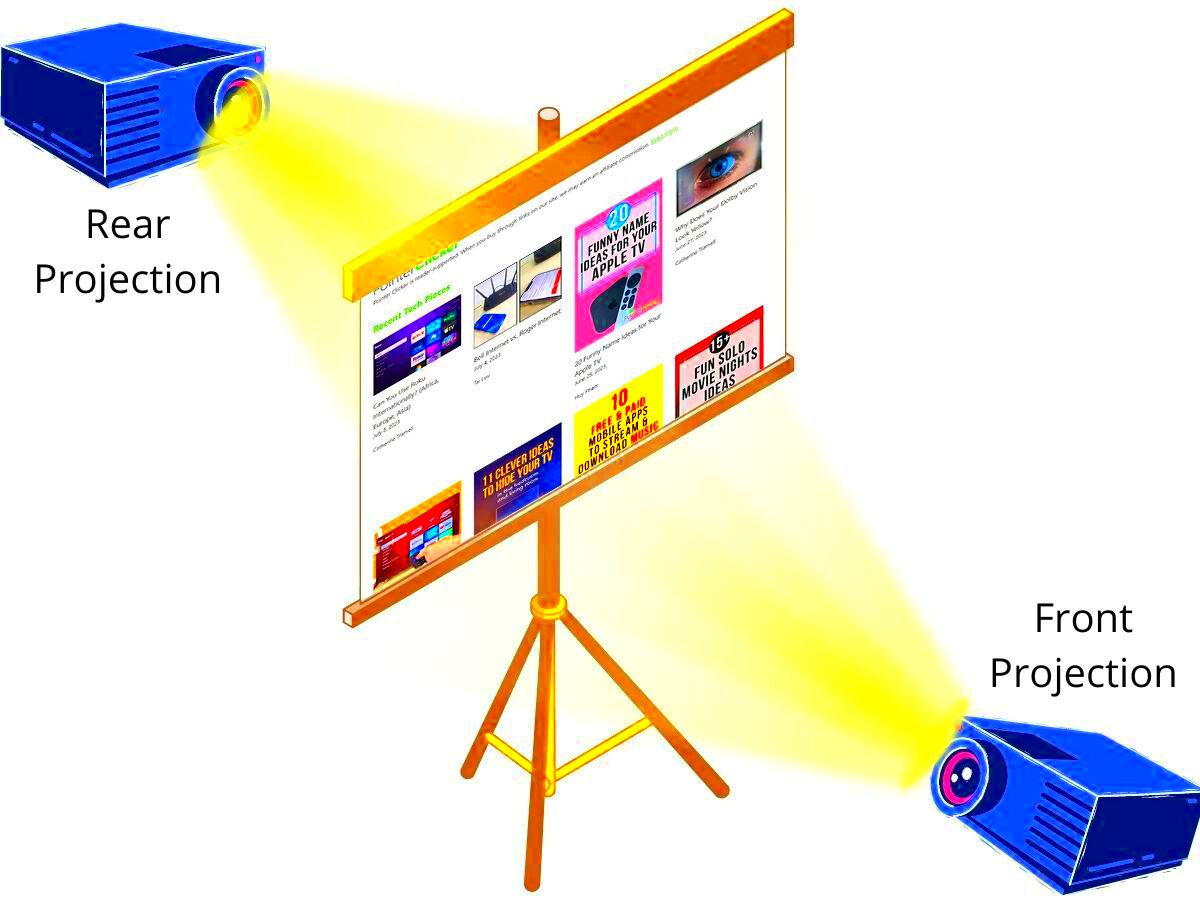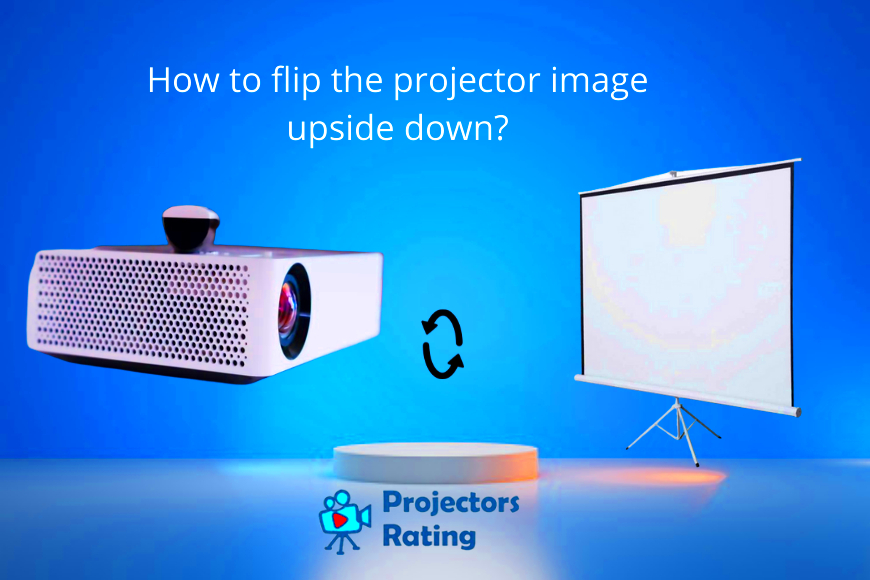Projectors are an essential tool for presentations, home theaters, and classrooms. Sometimes, however, you may face issues where the image displayed is upside down or flipped. This can be frustrating, especially if you need a clear, correctly oriented image for your presentation or movie night. Flipping a projector
Understanding Common Projector Image Issues

Projectors can experience a variety of issues that affect image quality and orientation. Some of the most common problems include:
- Upside-down images: Sometimes, the image appears inverted, making the projection hard to view properly.
- Flipped images: In some cases, the image may appear mirrored, which can be confusing for viewers.
- Distorted images: A warped or skewed image could result from incorrect projector settings or alignment issues.
- Blurry images: Focus problems or a poor connection between the projector and the source device can cause image quality to suffer.
Understanding these issues is the first step toward fixing them. Most of these problems can be solved by adjusting the settings on the projector itself or on the connected device. Now, let’s focus on why your projector image might be upside down or flipped and how to address it.
Also Read This: How to Make Money on 123RF as a Contributor: Tips and Tricks
Why the Projector Image Might Appear Upside Down or Flipped

There are a few reasons why a projector image may appear upside down or flipped. Understanding these reasons can help you troubleshoot the issue effectively.
- Projector orientation: Many projectors allow you to mount them on the ceiling or place them on a table. The image orientation can automatically flip depending on the position of the projector. If you’re using a ceiling-mounted projector, the image might be flipped upside down unless adjusted.
- Internal projector settings: Some projectors come with a setting in their menu options to flip the image. This is often useful when the projector is placed in unusual positions like being upside down on a ceiling mount.
- Graphics card or computer settings: If you're connecting a computer or other device to the projector, the display settings may be set incorrectly. Sometimes, a graphics card might automatically flip the image, especially if it detects the orientation change from your projector.
- Connection issues: If the projector’s connection to the source device is loose or faulty, the image might flip due to signal distortion.
By knowing these potential causes, you can narrow down the issue and fix it using the right method.
Also Read This: Inverting Colors of a 2D Image by Hand
Checking Projector Settings for Flipping Options
If you’re having trouble with a flipped or upside-down image, the first place to check is the projector’s settings. Many projectors offer a built-in option to flip or rotate the image, especially when mounted on the ceiling. These options are often found within the projector’s menu system, which can be accessed using the remote control or the buttons on the device itself.
Here’s how you can check for these options:
- Power on your projector: Turn on the projector and wait for it to warm up.
- Access the menu: Use the remote control or projector’s physical buttons to access the settings menu.
- Look for orientation settings: In the menu, search for settings related to image orientation. It may be listed as “Image Flip,” “Projection Mode,” or “Orientation.”
- Adjust as needed: If you find an option for flipping the image, set it to the desired orientation (e.g., “Ceiling” for an upside-down view or “Front” for normal orientation).
Some projectors also have a quick toggle for flipping the image, especially models designed for presentations. If you’re unable to find the flip option in the menu, check the user manual for specific instructions related to your model.
Also Read This: Removing Watermark on Adobe Stock: Guidelines and Processes
Flipping the Image Using the Projector’s Menu
If your projector has an image flip feature, it’s typically easy to use. Most modern projectors allow you to adjust the image orientation through the on-screen menu. This is helpful when your projector is mounted on the ceiling or placed at a different angle.
Follow these steps to flip the image using the projector’s menu:
- Open the menu: Press the “Menu” button on your remote control or the projector’s physical buttons.
- Find the “Projection Mode” or “Orientation” setting: This is where you can adjust how the image is projected based on its orientation.
- Select the appropriate option: Choose options like “Ceiling,” “Front,” “Rear,” or “Reverse” depending on your projector's mounting position. “Ceiling” will flip the image upside down if mounted overhead.
- Confirm the setting: After selecting the desired option, press “OK” or “Enter” to confirm. The image should now appear correctly oriented.
Some projectors offer additional features, such as rotating the image 90 or 180 degrees, which may also help if you need to adjust the viewing angle further.
Also Read This: Why 123RF Is the Perfect Choice for Business Marketing Campaigns
Adjusting the Computer Settings to Flip the Image
If the image is flipped on your projector but the projector settings seem fine, the issue could lie with the computer or device that’s connected to it. Modern computers and laptops offer display settings that allow you to flip or rotate the screen, which in turn affects the image output to the projector.
Here’s how to adjust the settings on your computer to fix the flipped projector image:
- Windows:
- Right-click on the desktop and select “Display Settings.”
- Scroll down and find the “Display orientation” option.
- Choose “Landscape (flipped)” to correct the upside-down image.
- Mac:
- Open “System Preferences” and select “Displays.”
- Click on the “Rotation” dropdown and select “Standard” or “90°” if the image is rotated.
- Graphics Card Settings: Some graphics cards, like NVIDIA or AMD, have their own display settings where you can rotate or flip the screen. Right-click on the desktop and select your graphics card’s control panel, then navigate to the display settings to adjust the orientation.
Once you adjust the settings on your computer, the projector should display the image in the correct orientation. Keep in mind that some older projectors might not support automatic rotation from a computer, so it’s always best to check both the projector and the computer settings if you're still facing issues.
Also Read This: Understanding the Meaning and Purpose of 123RF
External Solutions for Flipping the Image
If you’ve checked the projector’s settings and your computer’s display settings but the image is still flipped, there are a few external solutions you can try. These solutions involve additional hardware or software that can help resolve the issue without requiring you to make further adjustments to the projector or computer.
Here are some external solutions that could help flip the image:
- VGA to HDMI Adapters: If you're using a VGA connection between your computer and the projector, consider switching to an HDMI cable. Some VGA to HDMI adapters come with built-in features to adjust image orientation, which can solve the problem.
- External Video Processors: Video processors or scalers can be used to adjust the signal sent from your device to the projector. These devices allow you to flip or rotate the image through the device’s settings. They’re particularly useful in professional environments where you may need precise control over image projection.
- Projector Software: Some projectors allow you to download and install software on your computer, giving you greater control over the image settings. Look for the manufacturer’s software or third-party options that enable image rotation or flipping.
- Mirror Boxes: A mirror box is a piece of hardware designed specifically to flip or mirror images from a device. If your projector doesn't support image rotation, this could be a quick fix for your projection needs.
While external solutions can be useful, they are often more of a workaround than a permanent solution. It’s best to address the root cause of the problem through settings adjustments before turning to these options.
Also Read This: Is 123RF a Legal and Safe Photo Site? What You Need to Know
FAQ about Flipping Projector Images
Having trouble flipping your projector image? Here are answers to some of the most common questions that might help you resolve the issue:
- Why is my projector image upside down? Your projector might be mounted upside down or set to “Ceiling” mode. You can adjust this in the projector’s settings or use the display settings on your computer to correct it.
- How can I flip the image on my projector without the remote? If your remote is not working, you can access the projector’s menu using the buttons on the projector itself. Most projectors have a “Menu” button to navigate through settings.
- Can I flip the image using a laptop? Yes, by adjusting your laptop’s display settings. On Windows, right-click the desktop and go to “Display Settings.” On Mac, go to “System Preferences” and adjust the rotation settings.
- What do I do if none of the settings seem to work? If you’ve tried adjusting the projector and computer settings but the image is still not correct, try using external hardware like a video processor or VGA to HDMI adapter to flip the image.
- Can I prevent the image from flipping in the future? Make sure your projector’s position and settings are correctly configured, and ensure your computer’s display settings are set to the desired orientation.
If your projector image continues to give you trouble, contacting customer support for your projector model can help you find specific troubleshooting tips and solutions.
Conclusion and Final Tips for Fixing Projector Image Issues
Flipping a projector image is a common issue, but it’s usually easy to fix with a few adjustments. Whether your image is upside down, flipped, or distorted, understanding the causes and how to address them is the key to a successful fix. Here's a quick recap of the steps to take:
- Check the projector settings: Most projectors have a flip option in the menu that adjusts the image orientation.
- Adjust computer display settings: If the projector settings are fine, make sure the display settings on your laptop or PC are correct.
- Consider external solutions: If the built-in options don’t work, you can explore using external hardware like video processors or adapters to flip the image.
Lastly, remember to keep your projector’s user manual handy, as it can be a valuable reference when troubleshooting. If all else fails, don’t hesitate to reach out to the manufacturer’s customer support for further assistance. With the right knowledge and tools, you’ll be able to quickly resolve projector image issues and get back to enjoying your presentation or movie night!

 admin
admin








